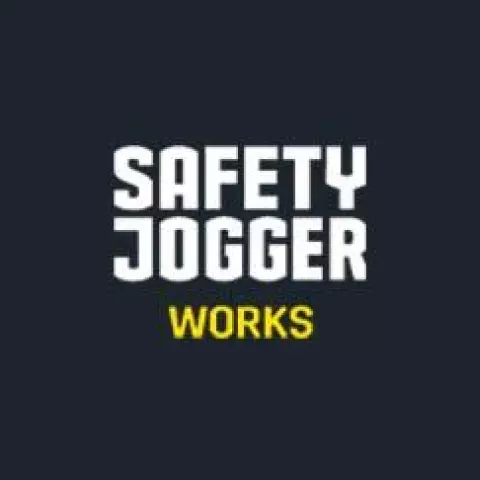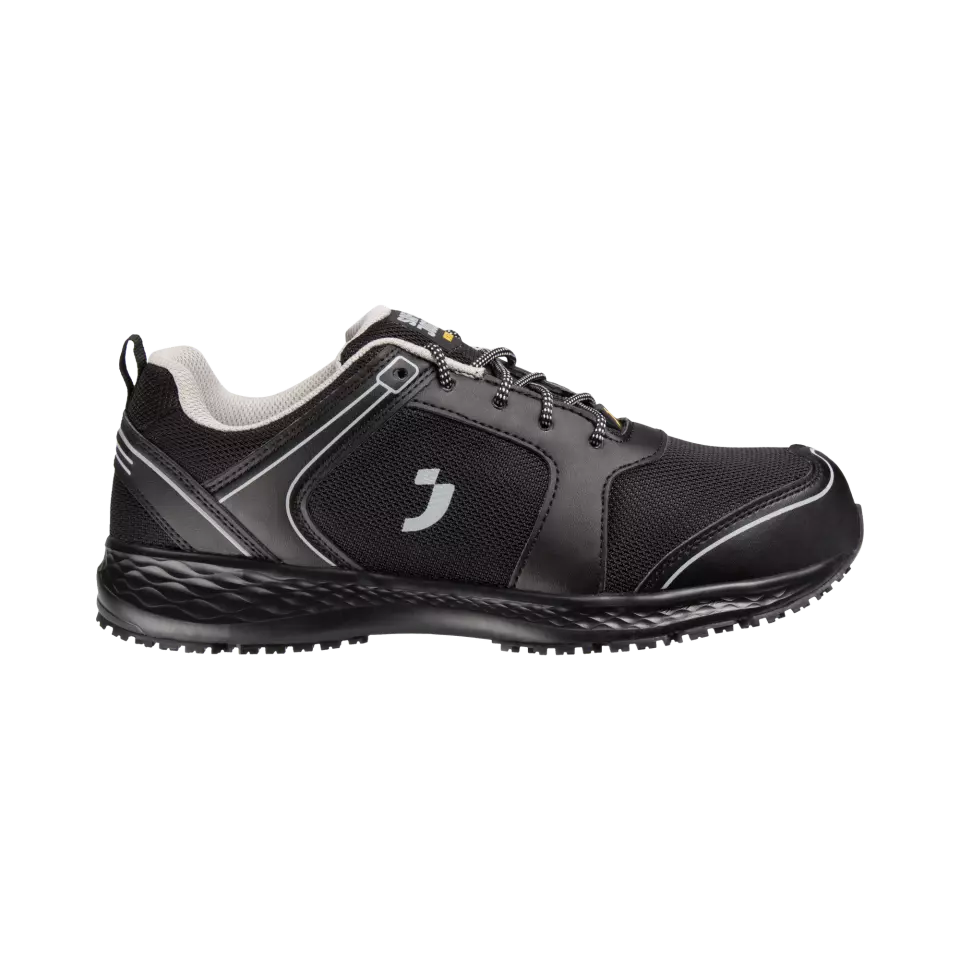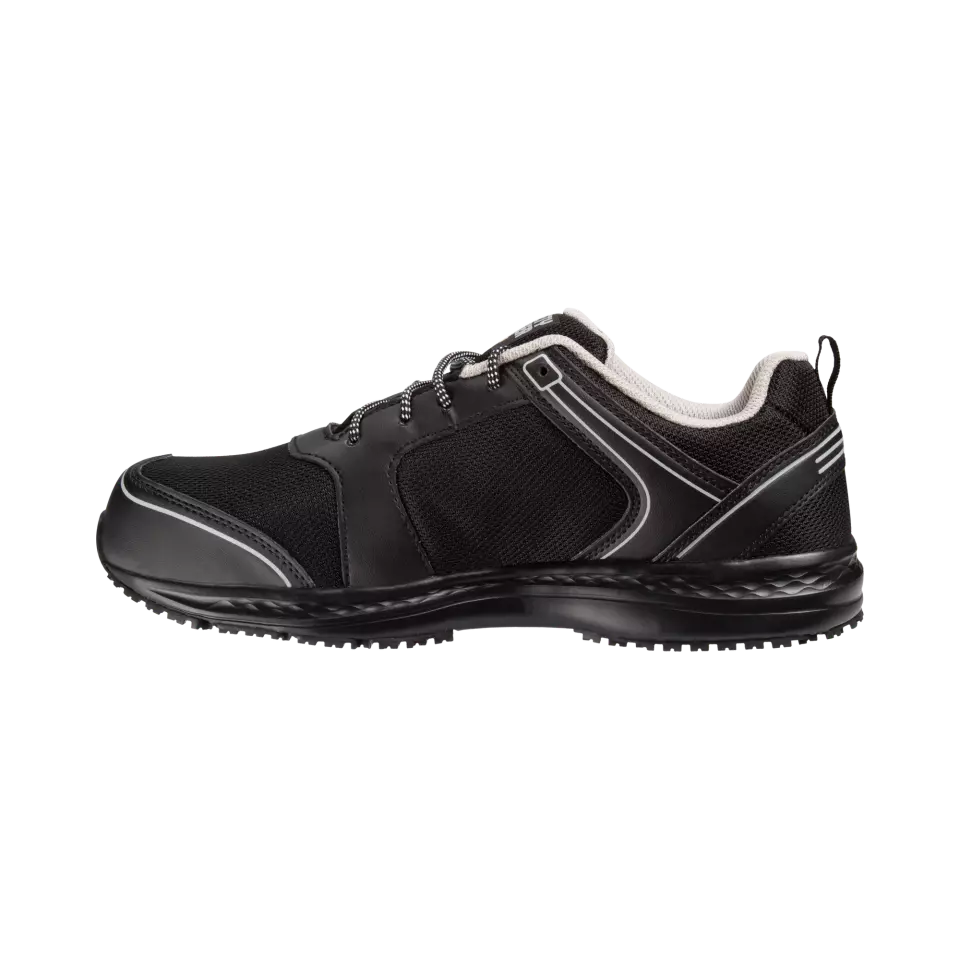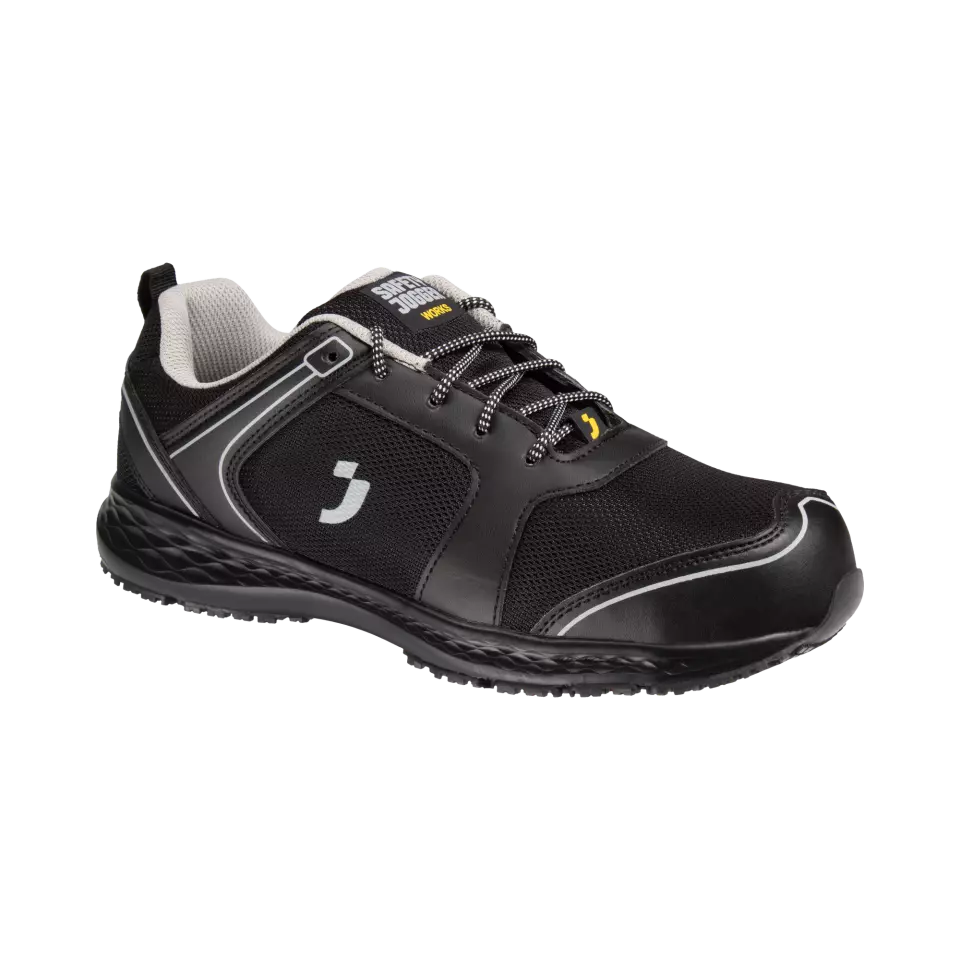Safety Jogger BALTO Safety shoes, light grey, S1
Safety Jogger
visit storeProduct description
This versatile low-cut safety shoe combines superior protection with all-day comfort for demanding workplace environments. Featuring a breathable synthetic and textile upper with a steel toecap that meets rigorous safety standards, the shoe provides reliable protection against impacts and compression. The Phylon/Rubber outsole delivers exceptional slip resistance on multiple surfaces while offering resistance to oils and fuels.
Product Features:
- Breathable upper with increased moisture and temperature management
- Oil and fuel resistant outsole for enhanced durability
- SRC slip resistance certification for maximum traction on both ceramic and steel surfaces
- Steel toecap providing robust protection against falling or rolling objects
- Removable SJ foam footbed with antistatic properties and shock absorption
Technical Details:
- Upper: Synthetic, Textile construction
- Lining: Mesh, Synthetic Leather for comfort
- Outsole: Phylon/Rubber (NBR) compound
- Antistatic properties with volume resistance between 100 KiloOhm and 1 GigaOhm
- Heel energy absorption: 35J
Recommended Applications:
- Automotive, Cleaning, Logistics, and Industrial sectors
- Ideal for dry environment working conditions
Standards:
- ASTM F2413:2018
- EN ISO 20345:2022
- Category S1 / SR, SC, HI, CI, HRO
Defines the substances used in construction that impact safety, durability, comfort, and protection from workplace hazards like impacts, chemicals, or electricity.
The method used to secure the shoe to your foot, affecting ease of putting on/removing, adjustability for comfort, and workplace safety.
Indicates whether the footwear has protective reinforcement (Safety) or no special toe protection (Plain), affecting workplace safety compliance and injury prevention.
Withstands degradation from oil exposure, maintaining sole integrity and extending shoe life. Ensures reliable traction in oily environments.
Reduces impact on feet and joints, lessening fatigue during long hours on hard surfaces. Provides enhanced comfort for demanding work environments.
Enhances stability on slick surfaces, reducing the risk of slips and falls. Designed for reliable grip and secure footing in various work environments.
Indicates the exterior color of safety footwear, helping you match workplace dress codes while considering visibility and practicality in your work environment.
The color of the shoe's bottom surface that affects visibility in low-light conditions, complements uniform requirements, and reflects personal style preferences.
Identifies the protective material in the toe cap that shields against impacts and compression. Different materials offer varying levels of protection, weight, and comfort.
- Cold Protective
- Heat & Flame Resistance
- Impact Resistance
- Electrical Protection
- Slip Resistant
Request a free sample
Test first and buy later. Visit any product page to request your free sample.
Standards and labels
Test results
General Requirements HROThe HRO result listed in the standard EN ISO 20345:2011 pertains to the heat resistance of the outsole of safety footwear. This test result confirms that the outsole is capable of withstanding exposure to high temperatures without degrading its physical properties and performance. The test method requires that the outsole of the footwear be exposed to 300°C for a minimum of 60 seconds under specified conditions, during which the outsole should not melt or crack, ensuring that it continues to provide protection against hot environments. Since the HRO classification attests to heat resistance, this feature is particularly important in industries such as metallurgy or construction, where contact with hot surfaces is a common hazard. Understanding this result can assist procurement professionals in sourcing appropriate safety footwear that meets the required durability and performance in high-temperature working conditions.
General Requirements CIThe CI designation in the standard EN ISO 20345:2011 refers to the insulation performance of footwear against cold. This specification indicates that the footwear offers insulation against cold conditions, protecting the wearer's feet from low-temperature environments. The test method for determining this involves measuring the temperature decrease inside the footwear when exposed to cold conditions over a specified period. This performance is crucial for footwear used in conditions where exposure to cold is significant, ensuring safety and comfort for the wearer in such environments. The practical implications for safety footwear in this category include enhanced worker safety and performance in cold climates, applicable to industries such as construction, cold storage, and outdoor operations in winter conditions.
General Requirements CRThe standard EN ISO 20345:2011 encompasses general requirements for safety footwear to ensure they provide adequate protection in various occupational environments. Rating 'CR' signifies that the footwear has a cut resistant upper ensuring enhanced protection. The test method involves assessing the material's resistance to splitting or cracking under certain conditions, which simulates real-world industrial hazards involving sharp objects or surfaces. Practically, this result ensures that the footwear is suitable for environments where there is a risk of materials splitting or getting caught, thereby providing essential safety benefits to the user.
General Requirements HIThe General Requirements HI result in the standard EN ISO 20345:2011 indicates that the footwear has been evaluated for insulation against heat. This particular result implies that the footwear can offer a certain level of protection against heat, ensuring that the user's feet are insulated when exposed to high temperatures. The test for this requirement involves assessing the footwear's capacity to provide insulation from heat under controlled test conditions. Given the practical implications, this result suggests that the footwear is suitable for environments where exposure to heat is a significant factor, such as in foundries or steel mills, thereby safeguarding the wearer’s feet against thermal risks. This is crucial for procurement professionals when considering safety footwear for sectors where heat resistance is paramount, ensuring compliance with safety regulations and protective performance criteria.
CE Marking is a label that shows a product meets certain safety and environmental standards set by the European Union. To get the CE Marking, a company must test and certify their product meets these standards. CE Marking is required for many products sold in the EU, including electronics, machinery, toys and medical devices. It helps ensure that products are safe for consumers and the environment, and allows for easy trade within the EU.
Safety Jogger delivery terms
Free delivery when you order more than 1 650,00 kr from Safety Jogger
Supplier shipping fee 60,00 kr
Brand minimum 0,00 kr
400,30 kr
Shipping fee is 60,00 kr for orders under 1 650,00 kr
Sold in units of one pair
Need larger quantities?
Other products you may like
Recently viewed
Need help?
Get help from our experts
Other products you may like
Similar products you may like
Safety Jogger
Delivery time: 6 business days
Supplier shipping fee 60,00 €
Free shipping on orders over 1 650,00 €



Find +150,000 products from hundreds of brands
Autonomous sourcing platform
The most efficient way to source and order supplies for your operations
Sourcing
Ordering
List products you’re looking for and we’ll find the best products and prices for you – all for free.
Need help?
Get help from our experts



